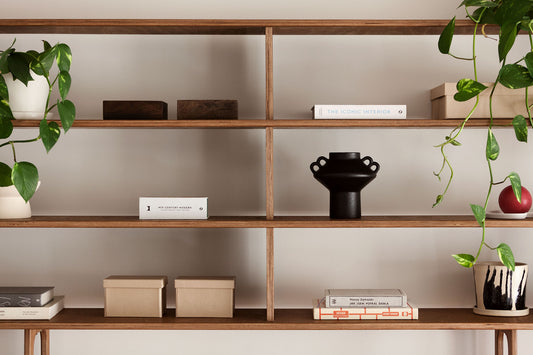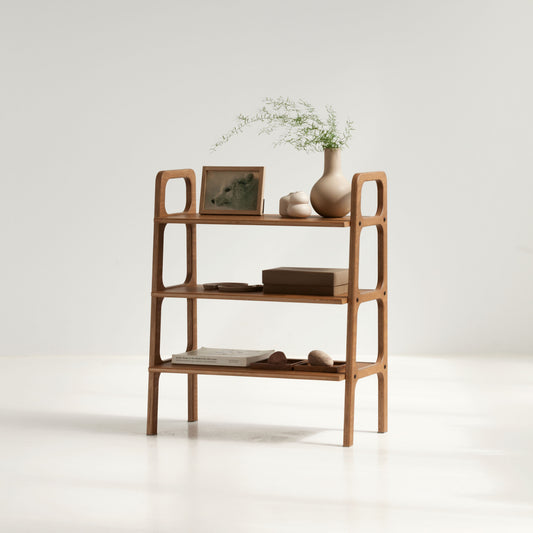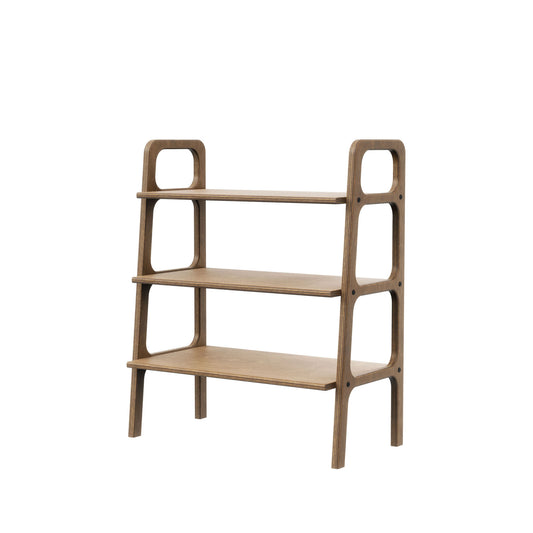The Fascinating History of Plywood: From Ancient Egypt to Modern Innovation
Plywood is one of the most widely used and versatile materials in construction, furniture, and design. But its history stretches back thousands of years, with ancient civilizations and modern innovators alike utilizing this material for its strength, flexibility, and durability. This article delves into the origins of plywood, from its humble beginnings in ancient Egypt to its pivotal role in modern design and industrial applications.
What is Plywood?
Plywood is an engineered wood product made by gluing together thin layers of wood, known as veneers, with the wood grain of each layer oriented at right angles to the one below it. This cross-graining technique improves the strength, stability, and durability of the wood, making it less likely to crack or warp under pressure. The versatility of plywood has made it essential in various industries, including furniture design, construction, and even aviation.

Source: Wisa Plywood
Ancient Egypt: The Beginnings of Plywood
Plywood’s roots date back to ancient Egypt around 3500 BCE. During this time, wood was scarce, and craftsmen needed to maximize their resources. To create durable and beautiful furniture, the Egyptians began gluing thin layers of expensive wood like ebony onto cheaper, local woods. This technique of veneering helped them produce strong, aesthetically appealing furniture, particularly for tombs and chests. One of the notable examples is the coffins made for Egyptian royalty, which utilized this early form of plywood.
The method used by Egyptian artisans to laminate different layers of wood together not only preserved their limited resources but also laid the foundation for the plywood that would be developed millennia later.
19th Century: Plywood in Industrial Applications
Plywood made a resurgence in the 19th century as industrial applications expanded. With advances in adhesive technologies, plywood became easier to manufacture on a larger scale, leading to its widespread use in various industries. Early uses of plywood included packaging materials, as it was light yet strong enough to create crates for machinery and other heavy goods.

Print, full-scale prototype of an elevated plywood railway in operation at the American Institute Fair, New York, 1867. Source: © Victoria and Albert Museum, London
British engineers like Henry Humphrey played a significant role in introducing plywood to industrial sectors. In the United States, inventor Alfred Ely Beach utilized plywood in his design for a suspension railway, showing its strength and versatility in transportation systems.
The Rise of Modern Plywood in the Early 20th Century
By the early 1900s, plywood had evolved into a standardized product used across various sectors. In 1905, the city of Portland, Oregon, introduced plywood to the public during the 100th-anniversary celebration of the Lewis and Clark Expedition. This marked a turning point for plywood’s commercial use and opened the door to large-scale production.

Left to right: Canoe, manufactured by the Haskell Boat Company, Ludington, Michigan, designed 1917 from the single piece of plywood, manufactured about 1930. © Victoria and Albert Museum, London; Brochure advertising the Haskell canoe, about 1930, US. Source: © Victoria and Albert Museum, London
The USDA Forest Products Laboratory, founded in 1910, further advanced plywood’s development, researching new ways to enhance its strength and durability. These innovations made plywood a practical material for everything from home building to industrial design.
Plywood in Modern Furniture Design: Alvar Aalto’s Innovations
Finnish architect and designer Alvar Aalto played a key role in transforming plywood into an essential material for modern furniture design. His use of bent plywood in the creation of the Paimio Armchair in 1932 showcased plywood’s strength, flexibility, and aesthetic potential. The armchair, designed for a tuberculosis sanatorium, was not only functional but also visually striking, with its soft curves and innovative use of laminated wood.

Armchair, designed by Alvar Aalto, 1932, Finland. Museum no. W.41-1987. © Alvar Aalto Museum. Source: Photograph Victoria and Albert Museum, London
Aalto’s work opened new possibilities in furniture design, showing that plywood could be shaped and molded into elegant and ergonomic forms. The Paimio Armchair became a symbol of modern design and helped propel plywood into the mainstream as a material for high-end furniture.
In addition to Aalto, other designers such as Charles and Ray Eames took advantage of plywood’s flexibility. Their iconic lounge chairs and other furniture pieces emphasized both the beauty and functionality of plywood, further establishing it as a staple in mid-century modern design.

In 1945 Time magazine called the LCW “the chair of the century”. It was first made available to the public in 1946, and we still make it in the same configuration today. In 1945, as the sense grew that the war was coming to a close, (source: the Eames Office)
The Role of Plywood in Aviation
Plywood wasn’t just limited to furniture and construction—it played a significant role in aviation as well. During World War I, plywood’s light yet strong characteristics made it an ideal material for aircraft construction. The famous de Havilland Mosquito, known as “the wooden wonder,” was largely built from plywood, demonstrating its ability to withstand the rigors of flight.
Plywood’s unique properties allowed aircraft manufacturers to design lightweight yet durable planes, contributing to faster, more efficient air travel. Its use in aviation cemented plywood’s place as an indispensable material in industries that required strength and flexibility.

British de Havilland Mosquito, 1941. Source: © de Havilland Aircraft Museum
The Plywood Production Process: How Plywood is Made
Plywood production begins with the harvesting of timber. The logs are stripped of their bark and then cut into thin sheets called veneers. These veneers are dried and stacked with their grain direction alternating between each layer, creating a cross-grain structure. This layering method is what gives plywood its unique strength and resistance to warping.
Once the veneers are stacked, they are coated with adhesive and pressed together under heat and pressure to form a solid plywood panel. The type of glue used can vary depending on the application, with some plywoods treated with water-resistant adhesives for outdoor use. Finally, the plywood is cut into panels of different sizes and thicknesses, depending on its intended use.
Plywood in the Furniture Industry: A Revolution in Design
Plywood’s strength, flexibility, and cost-effectiveness make it an ideal material for furniture design. Beyond Alvar Aalto’s groundbreaking work, designers like Marcel Breuer and Charles and Ray Eames also revolutionized furniture design with their use of plywood. The Eames’ Lounge Chair, for example, became one of the most iconic pieces of mid-century furniture, showcasing plywood’s potential as a material for both functional and elegant design.
Breuer and other designers from the Bauhaus movement also embraced plywood for its ability to be molded into various shapes, allowing for greater creativity in design. Whether in mass production or custom furniture making, plywood continues to be a popular choice for designers around the world due to its versatility and sustainability.

Set of three occasional tables designed by Marcel Breuer for Isokon, England. 1936. Source: modernity.se
Sustainability and the Future of Plywood
As environmental concerns have grown, the plywood industry has made efforts to adopt more sustainable practices. Many manufacturers now use responsibly sourced timber and production methods that minimize waste. Since plywood can be produced from smaller, fast-growing trees, it is often considered more eco-friendly than solid wood.
Additionally, modern adhesives used in plywood production are formulated to be less harmful to the environment, reducing the emissions associated with traditional glues. This makes plywood not only a practical and cost-effective material but also an environmentally responsible choice for construction and design.
Other Noteworthy Applications: Plywood in the 20th Century
In addition to its use in furniture and aviation, plywood has been employed in various other applications throughout the 20th century. For example, plywood was crucial in the development of Alfred Ely Beach’s suspension railway, where its strength and lightweight properties made it ideal for this innovative transportation system.
Plywood also found extensive use in the aircraft industry, where its strength-to-weight ratio allowed for the creation of durable yet lightweight aircraft components. This material has also been used in many military applications, from creating thousands of war accessories to barracks and more.
 Charles and Ray constructed various molded plywood aircraft parts for the U.S. Navy. Part of Charles and Ray’s experimentation with molded plywood included producing airplane stabilizer tails, fuselage, and other aircraft parts for manufacturers such as Vultee Aircraft. (Source: Eames Office)
Charles and Ray constructed various molded plywood aircraft parts for the U.S. Navy. Part of Charles and Ray’s experimentation with molded plywood included producing airplane stabilizer tails, fuselage, and other aircraft parts for manufacturers such as Vultee Aircraft. (Source: Eames Office)
Conclusion: Plywood’s Enduring Legacy
Plywood’s journey from ancient Egyptian tombs to modern furniture design and aviation is a testament to its versatility and durability. Whether in the form of elegant furniture like Aalto’s Paimio Armchair, or innovative aircraft like the de Havilland Mosquito, plywood has proven to be a material that continually adapts to new challenges and opportunities.
As the plywood industry continues to innovate and focus on sustainability, the future of this material looks just as promising as its past. Its role in modern design, construction, and beyond ensures that plywood will remain an essential material for generations to come.

Left to right: Leg splint, designed by Charles and Ray Eames, 1941 – 42. Museum no. W.31-2016. © Eames Office, LLC (eamesoffice.com). Photograph Victoria and Albert Museum, London; DCM chair, designed by Charles and Ray Eames, 1945, manufactured about 1947. Museum no. W.7-2017. © Eames Office, LLC (eamesoffice.com).
(Source: Photograph Victoria and Albert Museum, London. )
Key Takeaways:
- Plywood originated in ancient Egypt, where it was used to create strong, durable furniture and chests.
- Modern plywood’s large-scale production began in the early 1900s, leading to widespread use in furniture, construction, and aviation.
- Designers like Alvar Aalto and Charles and Ray Eames showcased plywood’s potential to revolutionize modern furniture design.
- Plywood played a pivotal role in the aviation industry, most notably in the construction of the de Havilland Mosquito aircraft.
- Sustainability and responsible sourcing are key focuses for the plywood industry today, ensuring its continued relevance and environmental responsibility.








